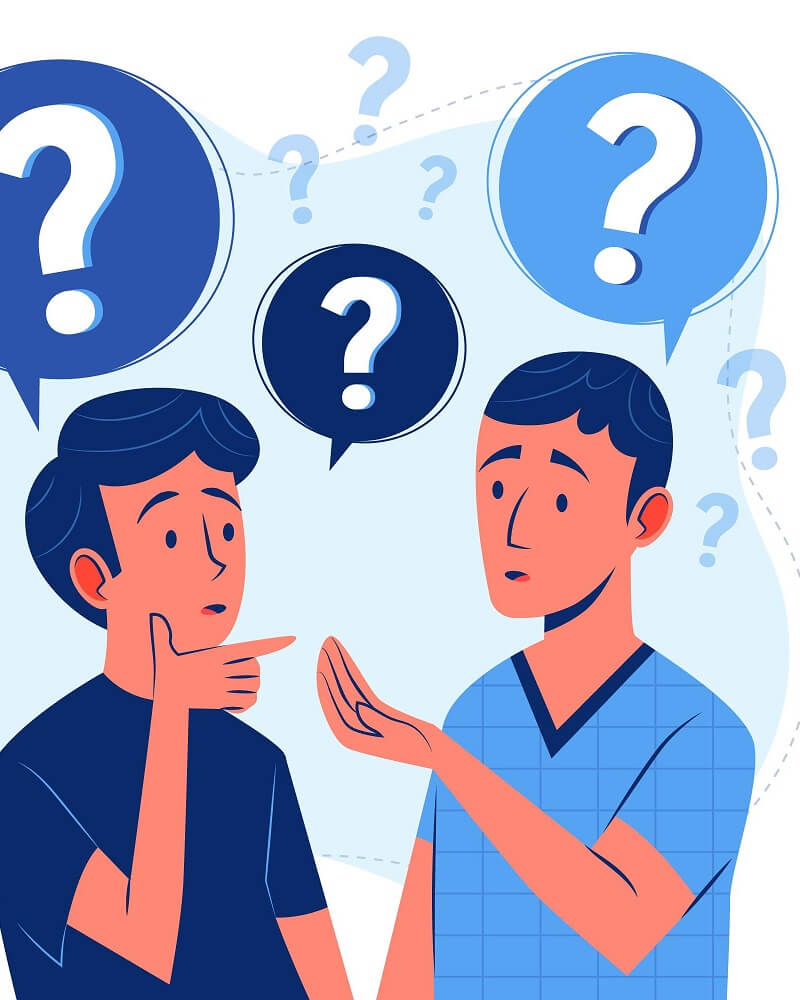Book Blaster Issue 1
“PhotoReading works!”
Here’s some feedback from Jennifer Denning in Dyfed, South Wales. Jennifer started the Course in late November 1995:
“I listened to lesson one of the PhotoReading Personal Learning Course and spent about five minutes PhotoReading the enclosed dictionary. the results were amazing! I had words popping out from the woodwork over the next two days. And I knew specifically where they were! I turned to my husband Trevor and said look up this word in the dictionary — it’s on page 120, seven words up on the right-hand column of the left-hand page — and I was right!
“With other words I just knew their position on the page. With some I knew they were four or five words down a column, with others I knew they were about a quarter or a third of the way down.
“It was spooky! I only spent five minutes PhotoReading! Of course I wasn’t always right, but I was right most of the time. Words kept popping into my head for a few days afterwards. I was busy in my office at work and the word emotion suddenly appeared — and I knew it’s position. I had to wait until I got home to check if I was right — and I was!
“While I was PhotoReading the words were just floating off the page, and the margins became very bright.
“The other day I had some papers to read for a meeting. the papers weren’t particularly easy to PhotoRead as they were on A4 sheets, but I decided that I’d see if I could absorb the material quickly. So I spent a few minutes PhotoReading, and found that I used some of the information in the meeting — more than I would have expected.
“I’ve always thought that my mind had this kind of ability, but I didn’t know how to access this infinite ability. Now I’ve had my first glimpses of what I can do.
“I can’t wait to get on with the Course. It’s so wonderful!”
By the way, in case you may be thinking that Jennifer is a bright young thing in her 20s or 30s she was generous enough to allow me to tell you that she’s 58, still bright and young at heart.
What to expect with the Dictionary Game
If you look at a double page spread in the dictionary you’ll see that there are two columns on each page, and you can split each column into three — so there are 12 sections in all.
This means that if, after PhotoReading say A to L in the dictionary, you think of a word and try to guess its position on the page you’ll get one in 12 correct by chance alone. So if you get three or more out of 12 then that’s pretty unusual, wouldn’t you think? Say you got five out of 12 right. Now that would be special — and that also means you got seven out of 12 wrong too!
So don’t expect to get most word positions correct — just mark yourself fairly and realise that any score of four or more is pretty impressive!
On the evening of Saturday December 2 1995 I was staying with some friends in Leeds. Simon, the host, is a physiotherapist and he asked me what I was up to, so I mentioned the results I’d had with PhotoReading. He promptly produced a fat Collins dictionary and said “Show us how it’s done then.”
Despite the fact that it was 11pm, and we were all starting to slow down, I took up the challenge and taught three friends the very basics of PhotoReading in about 20 minutes. Simon suggested all three should take a test, so I picked words out of the dictionary at random and announced them, and all three guessed the positions.
Simon surprised himself by being so accurate on so many words. For example when I said Amaze, he guessed fifth word up on the left hand column of the right hand page. In fact he got the page wrong — but it was the fifth word up on the left hand column! What was even more interesting was that he circled all guesses that he was certain were right — and he’d circled ‘fifth’ and ‘left column’ but not ‘right page’!
Simon devised a scoring system and out of 30 possible points he got 15 — whereas pure chance would probably have generated three (plus or minus three), so 15 was incredible! And the other two also got high marks too.
So try this game with your partner, or a family member, and see what kind of results you get — and let us know here at LifeTools.
From dictionary to real books…
the Dictionary Game, although remarkable, is really just a party piece — with not too much practical value, though it could help you to spell better. then again, if you try PhotoReading a thesaurus.
What the Game proves to you is that something magical can happen within just one hour of starting to learn PhotoReading. Your mind really does know where certain words appear on any page. It’s taken in a huge amount of information without deliberate concentration or memorisation.
Now you can approach other, more practical books with enthusiasm, commitment and energy. You can try out your skills immediately — you don’t have to wait until you’ve been through more lessons — just don’t expect too much at this stage.
Bear in mind that recordings two to eight build on what you learn during lesson one, so that by lesson eight you’ll be an expert PhotoReader — yet you can get some value even after using just the first lesson.
Now imagine what your enthusiasm and PhotoReading can do together!

Chris Payne at LifeTools (left) and Paul Scheele,
developer of PhotoReading, when they first got together in April 1995
Mind machines help with PhotoReading
You may have heard of mind machines, sometimes called light and sound machines (click here for more info). Here at LifeTools our main business is selling the very best of these devices to help people relax, sleep or learn better. We’ve been doing this for nearly three years — then we discovered PhotoReading in April 1995.
Paul Scheele, developer of PhotoReading, owns our best-selling machine, the MindLab and loves its power to reduce jetlag on business trips, and help get the best results from his own recordings.
A mind machine can help you get into a more deeply relaxed state so you enter PhotoFocus easily and so on. Typically you would select a 15-minute Relax-type session on the mind machine.
For the first five minutes you would mentally prepare for PhotoReading, state your purpose and position the imaginary tangerine.
then you would take the liteframes off, keeping the headphones on, and PhotoRead for five minutes, using the rhythmic tones to pace your page turning.
When you’ve gone through the book put the liteframes back on and affirm that the book’s contents have been absorbed, and so on.
Paul and I have put together a sheet explaining how to get the very most information from your reading by combining PhotoReading and mind machines. You can have a free copy by ringing or writing and asking for sheet PRMM, or adding this code to an order line on your next order.
Student achieves dramatic results
DF is an Open University student, living with her family in Ross-shire, Scotland. She is three quarters of the way through a BSc Honours degree in Psychology.
In each OU year, which runs from February to October, she has to read OU publications for 22 course units, read set books (about one a week), conduct research and submit seven written assessments.
She enthuses: ” As a result of using the PhotoReading techniques I am now so far ahead that I could complete the Psychology course four months early — but my tutor has asked me to slow down. My assessments now average 89% — and the tutor thinks his students are doing well if they score around 65%. My tutor has even told me that some of the other students have felt intimidated by my results, and he’s had to reassure them!
“For one essay I went in the library and PhotoRead 16 books with the purpose of getting one relevant quote from each. I found exactly what I wanted very quickly and used them in the essay. When I got my essay back off my tutor he’d written: ‘I really must borrow these books off you.’ I almost feel a cheat, yet I went through every page of each book, and subconsciously absorbed the relevant parts.
“Over Christmas, as an experiment, I selected five novels by medical crime writer Patricia Danielson. My plan was to PhotoRead the first three then read them at normal speed, and just read the other two as normal. I loved the books that I PhotoRead first, and got really absorbed in the stories. I read one book without PhotoReading first, and I felt so disconnected and uncomfortable with the book as a result — and so distant from the story — that I PhotoRead the final book first before I read it at normal speed.
“In other areas of my life I’ve been having a few surprises too. I took up the violin 18 months ago. Six months ago I was at grade two standard. But in the last month my playing has improved so much that my teacher has said I could now achieve grade four if I wanted.
“I also teach badminton to players from age eight upwards for the Scottish Badminton Union. I’ve PhotoRead all my badminton books, and now my opponents can’t believe how much I’ve improved!
“As I PhotoRead something almost every day I now find that when I’m driving it is as though my vision is really wide. I am actually seeing things I never noticed before in 10 years of driving down those roads.
“The whole PhotoReading experience has been very stimulating, and I’m really looking forward to seeing just how many other ways PhotoReading will manifest in my life.”
Your questions answered
I don’t seem to be getting results with the dictionary game. What should I do?
First of all, relax. Let go of your expectations. People who find the dictionary game hard to grasp are too anxious about getting quick results. PhotoReading is far more like playtime than exam time. Just let go. Daydream for a while then check some words and see what happens. When you least expect it, you’ll get some amazing results. See the first page of this newsletter for more ideas.
I want to PhotoRead a book on Ancient Greece. What can I expect to get from five minutes of PhotoReading?
Consciously you may not notice any difference. But say you wanted to know about slavery. You would articulate the question as clearly as possible, then open the book at the contents page. Your eyes may fall on one chapter title, yet it may not at first seem to be relevant.
You turn to that chapter and flick through a few pages. Your eyes lock on one paragraph, so you read it and realise that this one chapter answers your question completely. Your conscious mind may want you to carry on reading because it thinks you could get more out of the text by carrying on — but if you do read further you’ll probably find you get no more information than you did in the original paragraph.
If you wrote an essay then you would tend to get much higher marks than you normally get — or were expecting.
If you met up with a friend, and he asked you about Ancient Greece, you’d talk for five/ten minutes, and he might say that you seem to have been really swotting up on the subject. He knows you well so he knows what you know — and he’s surprised at the sudden improvement. You may not feel as if you are any more knowledgeable — but you trust your friend’s judgement.
If you did a multiple-choice quiz then you would tend to get far more questions correct. Or someone may ask you which year a particular senator was born and immediately ask you for the first three numbers that come into your head. You might blurt out one, two and nine seemingly as random — yet it is likely that this senator was in fact born in 129AD.
Over time you would learn how to access the information more consciously.
Can children learn to PhotoRead?
Yes, certainly. they are usually very eager to learn, love playing learning games, and are willing to consider failure as a step on the road to inevitable success. One Saturday morning we had a six year old niece over to stay. I’d asked her to bring a children’s dictionary with her. Over the next 20 minutes or so I explained about the game we were going to play, and led her through a simple PhotoReading procedure as she went through the dictionary about a page every two seconds.
I then asked her to think of a word and she said cheese. She ‘guessed’ it was right in the middle of a right hand page. Her face was a picture when she found she was exactly right!
Improve your PhotoReading skills by changing your beliefs
 there’s one Paraliminal title that Paul Scheele highly recommends to all new PhotoReaders: Belief. This recording is nothing like the PhotoReading lessons which are mostly instructional.
there’s one Paraliminal title that Paul Scheele highly recommends to all new PhotoReaders: Belief. This recording is nothing like the PhotoReading lessons which are mostly instructional.
Belief is similar in style to the Memory Supercharger title you got with the course, and helps you change outdated limited beliefs like “I can only read effectively at around 200 words a minute” to new, positive beliefs.
As a result of listening to this recording you will have a stronger sense that your mind really can PhotoRead at 25,000 words per minute; that your mind is capable of tremendous processing even though you may not have consciously tapped into it in the past. As with all Paraliminal recordings, Belief is simple to use. On side A you will identify a self-limiting belief and begin revealing personal strengths that can serve you. On side B you will form these resources into a new self-enhancing belief and install it to take the place of the old belief that no longer serves you. Belief is available from LifeTools HERE


